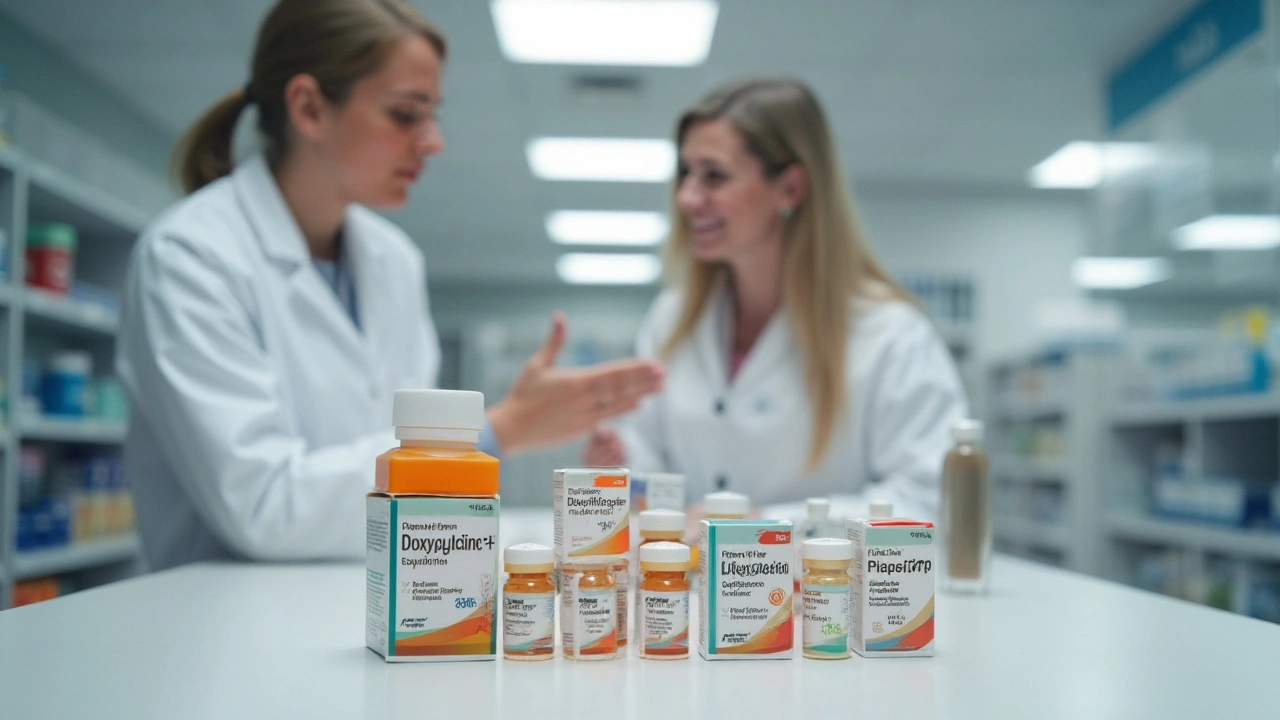Antibiotics: What They Are, When to Use Them, and How to Stay Safe
If you’ve ever gotten a prescription that says “antibiotic,” you probably wonder what it actually does. Antibiotics are medicines that fight bacteria. They don’t work on viruses, so taking one for a cold won’t help and can cause problems.
In the antibiotics tag on our site you’ll find articles about specific drugs, alternatives, and safety tips. Below we give you the basics you need to know before you pop a pill.
When an Antibiotic Is Right for You
Doctors prescribe antibiotics for infections that are clearly caused by bacteria. Common examples include:
- Strep throat
- Urinary tract infections
- Pneumonia caused by bacterial germs
- Skin infections like cellulitis
If your symptoms are mild, last a few days, and you have no fever, your doctor may suggest waiting to see if your body clears the infection on its own. This “watchful waiting” helps avoid unnecessary antibiotic use.
Risks and How to Reduce Them
Every medication has side effects, and antibiotics are no exception. The most common issues are stomach upset, diarrhea, and yeast infections. A less common but serious problem is an allergic reaction, which can cause rash, itching, or trouble breathing.
To keep risks low, follow these simple steps:
- Take the exact dose prescribed. Don’t skip doses to finish early.
- Complete the full course, even if you feel better. Stopping early can let bacteria survive and become resistant.
- Don’t share antibiotics with family or friends. What works for one infection may be wrong for another.
- Tell your doctor about any allergies or previous bad reactions.
If you notice severe diarrhea, blood in the stool, or a rash, call your doctor right away. Those could be signs of a more serious side effect.
Some people wonder if there are alternatives to antibiotics. In many cases, supportive care—like rest, fluids, and over‑the‑counter pain relievers—can help the body fight off a mild infection without drugs. For specific infections, doctors may prescribe non‑antibiotic treatments, such as antiviral pills for flu or antifungal creams for yeast infections.
Our tag page also includes guides on popular antibiotics, how to buy them safely online, and what to watch for when ordering from overseas pharmacies. Those articles break down dosage tables, common drug interactions, and red‑flag signs of counterfeit meds.
Bottom line: antibiotics are powerful tools when used correctly, but they’re not a cure‑all. Knowing when they’re needed, how to take them properly, and what side effects to expect can keep you healthy and prevent resistance.
Got a specific antibiotic question? Browse the articles under the antibiotics tag for detailed, up‑to‑date info on each drug, safety tips, and alternatives that fit your situation.
-
 VIEW POST
VIEW POSTOTC Antacids and Antibiotics: How They Reduce Absorption and Risk Treatment Failure
Nov, 16 2025|8 CommentsOTC antacids can reduce antibiotic absorption by up to 90%, leading to treatment failure. Learn which antacids interfere, how to time doses safely, and what to do if you're already taking both. -
 VIEW POST
VIEW POSTCipro Antibiotic: Uses, Side Effects, & Key Facts You Need to Know
Jun, 8 2025|12 CommentsCipro, also known as ciprofloxacin, is an antibiotic used to treat different types of bacterial infections. This article breaks down how Cipro works, what infections it covers, real-life risks and side effects, and the facts you must know before taking it. People often wonder about drug interactions or safe use tips, and we’ve got those covered too. You’ll also find clear advice on staying safe if your doctor prescribes Cipro. -
 VIEW POST
VIEW POSTExploring 5 Alternatives to Levofloxacin
Mar, 21 2025|11 CommentsChoosing the right antibiotic is crucial for effective treatment, especially when Levofloxacin can't be used. This article breaks down five alternatives, highlighting their uses, pros, and cons. From Clindamycin to Linezolid, we’ll discuss how these options target different infections. With the pros and cons of each, you’ll be armed with the info you need for a more informed discussion with your healthcare provider. -
 VIEW POST
VIEW POST9 Alternatives to Augmentin: Explore Your Options
Jan, 28 2025|10 CommentsLooking for alternatives to Augmentin? We've rounded up nine options that you might consider. Each alternative has its pros and cons, so it's essential to understand them before making a decision. Whether you're dealing with allergies, side effects, or specific medical conditions, this guide can help you choose the suitable antibiotic for your needs. -
 VIEW POST
VIEW POSTTop 5 Effective Alternatives to Zithromax in 2024
Oct, 22 2024|13 CommentsIn 2024, several antibiotics serve as effective alternatives to Zithromax for treating bacterial infections. Each alternative comes with its own set of pros and cons and varies in terms of effectiveness and side effects. From Doxycycline to Levofloxacin, this article explores these options, helping you find the best treatment for your needs.